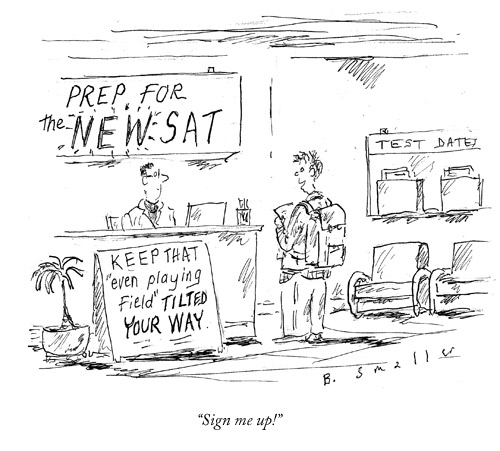SAT v. New SAT

January 30, 2016
Unlike the seniors who are almost finished with their “college-journey,” all of the underclassmen, especially juniors, have to deal with standardized testing. For the class of 2017, they could have either chosen to take the old SAT (January 2016 and before), or the new SAT (starting March 2016). So, what exactly is the difference?
Well, the change between the old and new SAT is actually quite drastic. In the current SAT, students receive a quarter point penalty for guessing. However, the new SAT doesn’t have any penalty for guessing. In this way, the redesigned SAT resembles more of the ACT. In the old SAT, the composite score is based on three scored sections: Math, Reading, and Writing. The new SAT has a composite score based on two scored sections: Math and Evidenced-based Reading and Writing. The composite score of the current SAT is reported from 600-2400, while the composite score of the redesigned SAT is between 400-1600.
The change doesn’t stop there. College Board made the essay optional in the new SAT, and also narrowed down the answer choices from five to four. The length of the new SAT without the essay and old SAT is the same with 3 hours and 45 minutes. But, if you choose to take the redesigned SAT with the essay, you have to add an extra 45 minutes to the current length.
The mathematics section of the new SAT is very different from the old. Instead of three math sections, there are only two math sections. One section is similar to the current SAT, and the other is similar to the ACT. The use of a calculator is only permitted on one section, and there is a total of 58 questions instead of 54. While the old SAT had 44 multiple choice questions and 10 student-produced response questions, the new SAT has 45 multiple questions and 13 student-produced response questions. The content tested includes all the content on the current SAT, plus trigonometry and some additional geometry relationships. This is the same as the mathematics section on the ACT.
The reading section of the redesigned SAT has only one section as opposed to three from the current SAT. Instead of two 25-minute sections and one 20-minute section, there is just one 65-minute section. There are a total of 52 passage-based reading questions, and no more sentence completion (vocabulary) questions that were on the previous SAT. Instead, vocabulary is tested in context questions on the passages rather than explicit vocabulary-based question sets. The new SAT also added two new types of questions to the reading section: command of evidence and data interpretation. Command of evidence questions ask students to pinpoint where in the passage they found an answer, and data interpretations refer to tables or graphs that accompany some of the passages. Students are asked to analyze the data in accordance with the information from the text.
Finally, similar to the reading section, there is only one writing section in the new SAT as opposed to three in the current SAT. The redesigned SAT has 44 passage-based and graphic-based grammar questions that students need to solve in the duration of 35 minutes. In the current SAT, there are 43 sentence-based questions and 6 paragraph-based questions that are split into one 25-minute and one 10-minute section. The third section of writing in the current SAT is a mandatory 25-minute essay.
Overall, the redesigned SAT offers students much more time per question on all sections when compared to the old SAT and even the ACT. However, the difficulty of each question is also higher than it was before. Depending on the type of test-taker you are, it may be beneficial to take a practice test for both, and then determine which option is better for you!






